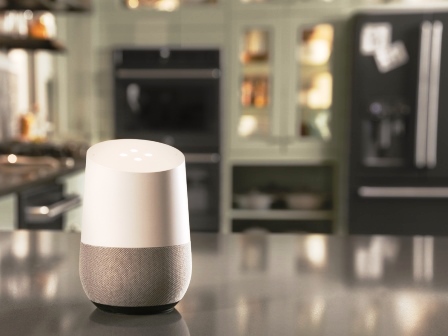 The future of e-commerce is conversational. By 2025, global spending on conversational commerce channels is projected to grow nearly sevenfold to about $290 billion, says the Conversational Commerce 2022 Report by Tovie.ai. At the same time, Juniper Research expects retail sales from chatbot-based interactions to reach $112B by 2023.
The future of e-commerce is conversational. By 2025, global spending on conversational commerce channels is projected to grow nearly sevenfold to about $290 billion, says the Conversational Commerce 2022 Report by Tovie.ai. At the same time, Juniper Research expects retail sales from chatbot-based interactions to reach $112B by 2023.
Increasing consumer demand and the development of smart devices powered by virtual assistants like Alexa, Siri, and Google Assistant, fostered the adoption of retail technologies powered by Conversational AI. These technologies are constantly evolving, enabling e-commerce brands to create new customer communication channels.
The Covid-19 pandemic fostered the rapid growth of e-commerce and retail digitization with AI chatbots and virtual assistants among the key drivers. Thus Digital Commerce 360 estimated that “the pandemic facilitated a gain of around $218 billion in e-commerce in the past couple of years.” However, traditional retail experiences still have lots of value, because people still enjoy going out and doing tactile shopping – especially in the post-pandemic world.
While 29% of retailers say delivering consistent shopping experiences across online and in-store channels is a challenge, bridging the physical-digital divide between online and in-store shopping experiences is the trend that will dominate e-commerce and retail in the next few years.
A recent study discovered that 48% of consumers who own smartphones use them while shopping in stores. Businesses can rely on digital strategies they would normally use online to convert customers to use them in-store too. Here, mobile becomes the most important channel, and although online will remain relevant for higher-value transactions, UX must be mobile-first.
Using technologies like QR codes, NFС tags, and proximity beacons, businesses create interactive experiences and empower self-service – the latter is particularly important since 88% of shoppers want to see measures related to preventing the spread of COVID-19. Thus, by placing QR codes on a product or shelf, retailers can facilitate safer payments, provide touch-free menus, and enhance the customer experience among other things.
While 37% of Millennial and Gen Z shoppers would prefer window shopping with QR codes, only 28% of retailers are planning to roll it out this year, which offers a clear investment opportunity.
 The personalized shopping experience is another e-commerce trend that in-store retailers will need to adopt, as 80% of consumers are more likely to make a purchase when brands offer personalized experiences. The QR codes when paired with an AI virtual agent of some sort can help retailers deliver truly personalized experiences: if a customer is interacting with certain products businesses can recommend other products, or notify customers they’re looking at the last item in stock to create urgency and get them to check out faster. Social proof is another thing: notifying customers that 30 people have just bought the jersey they’re looking at in the last 3 days.
The personalized shopping experience is another e-commerce trend that in-store retailers will need to adopt, as 80% of consumers are more likely to make a purchase when brands offer personalized experiences. The QR codes when paired with an AI virtual agent of some sort can help retailers deliver truly personalized experiences: if a customer is interacting with certain products businesses can recommend other products, or notify customers they’re looking at the last item in stock to create urgency and get them to check out faster. Social proof is another thing: notifying customers that 30 people have just bought the jersey they’re looking at in the last 3 days.
Another thing that’s been widely discussed in the past two years is the touchless future of retail: contactless payments, growing demand for self-service, and voice interfaces becoming the most hygienic ones. Some 73% of retail industry leaders considered faster search via voice to be a top end-user benefit of voice assistants. At the same time, Voice Commerce sales are expected to reach $164B worldwide by 2025.
In this view, conversational agents, be they chatbots or voice assistants, become an accessible customer-communication channel and empower self-service. Paired with other technologies ( NFС tags, QR codes, Bluetooth beacons) that can create interactive experiences where customers can get individualized information or individual product recommendations without the need to interact with the sales assistant, which enables businesses to scale the expertise of their in-store sales staff.
Check out free Conversational Commerce 2022 Report by Tovie.ai here.
See also: Another View: Alternative Payment Methods Are Here To Stay












